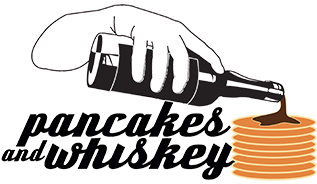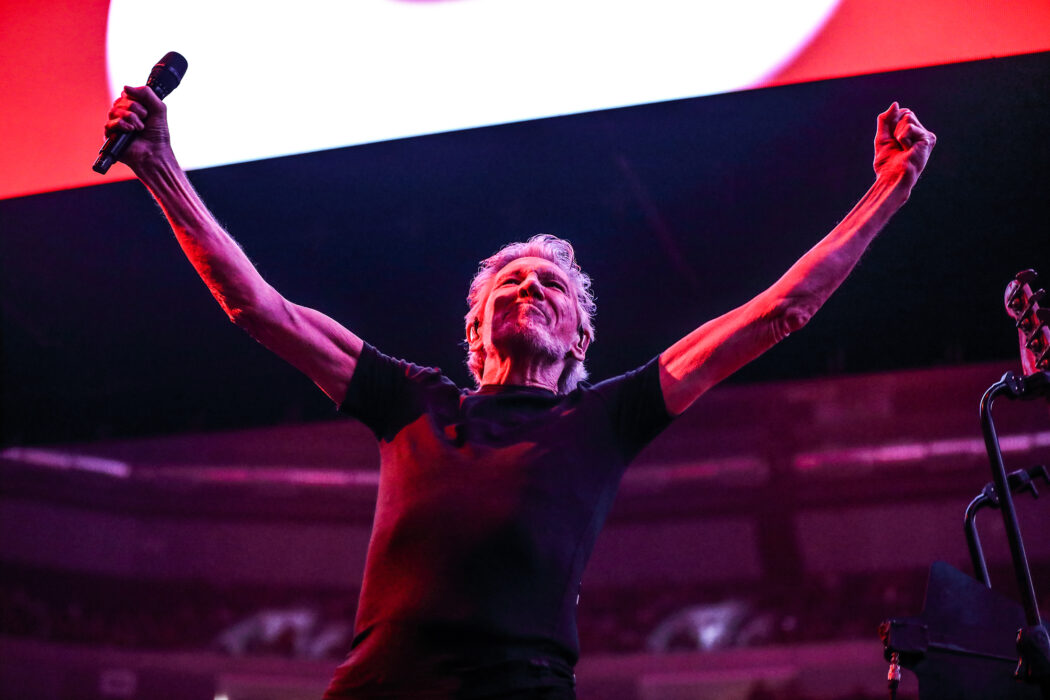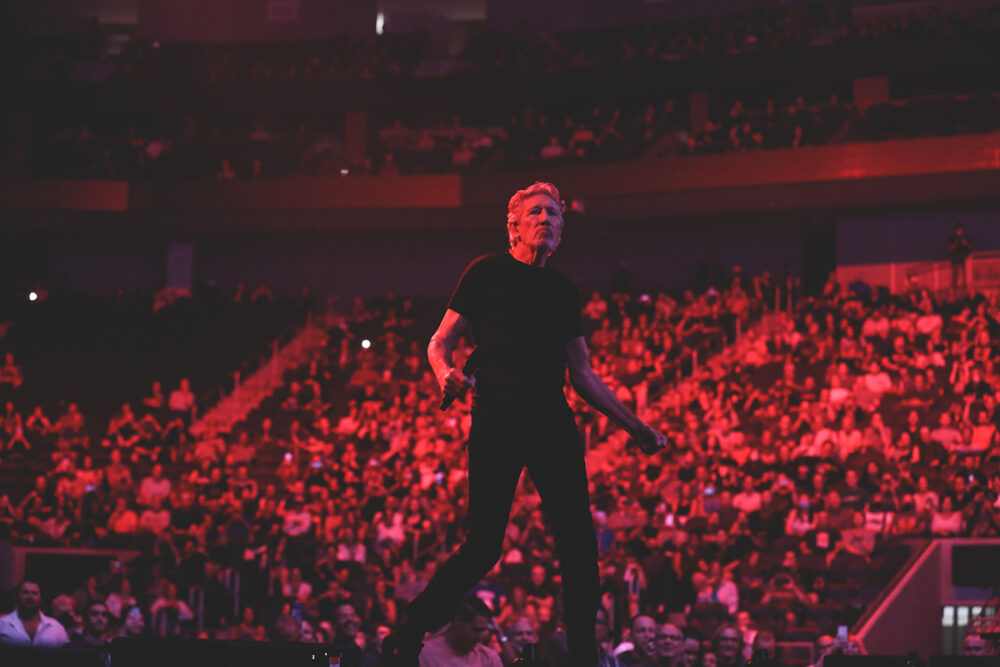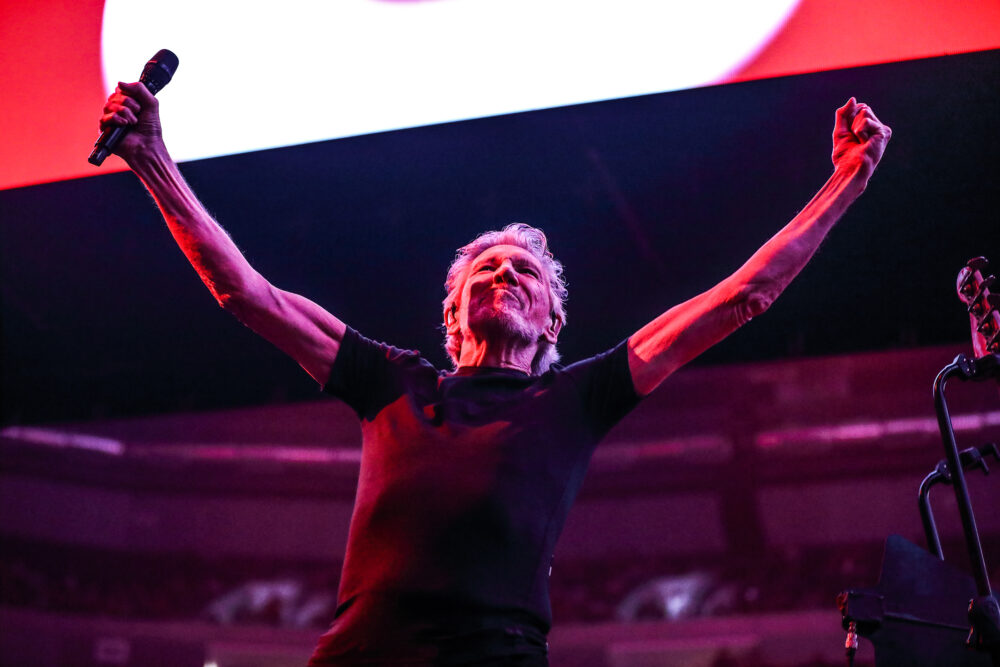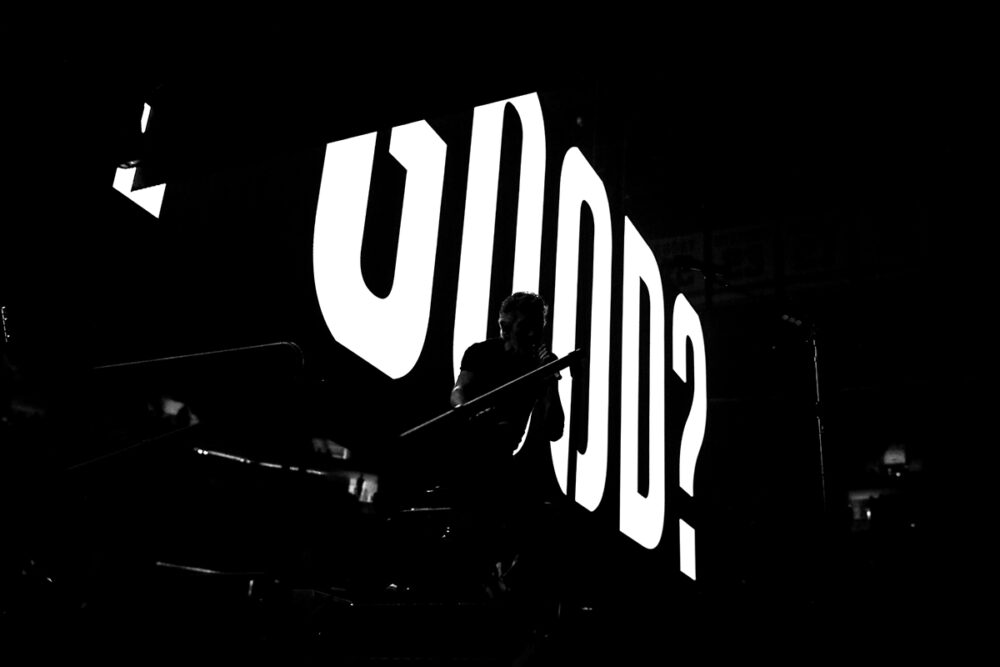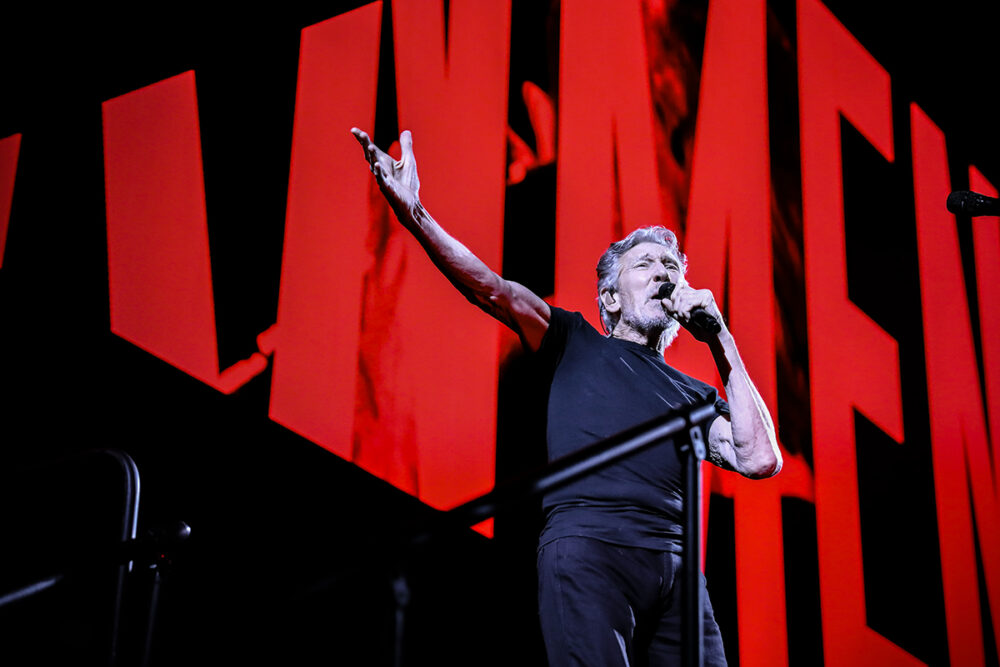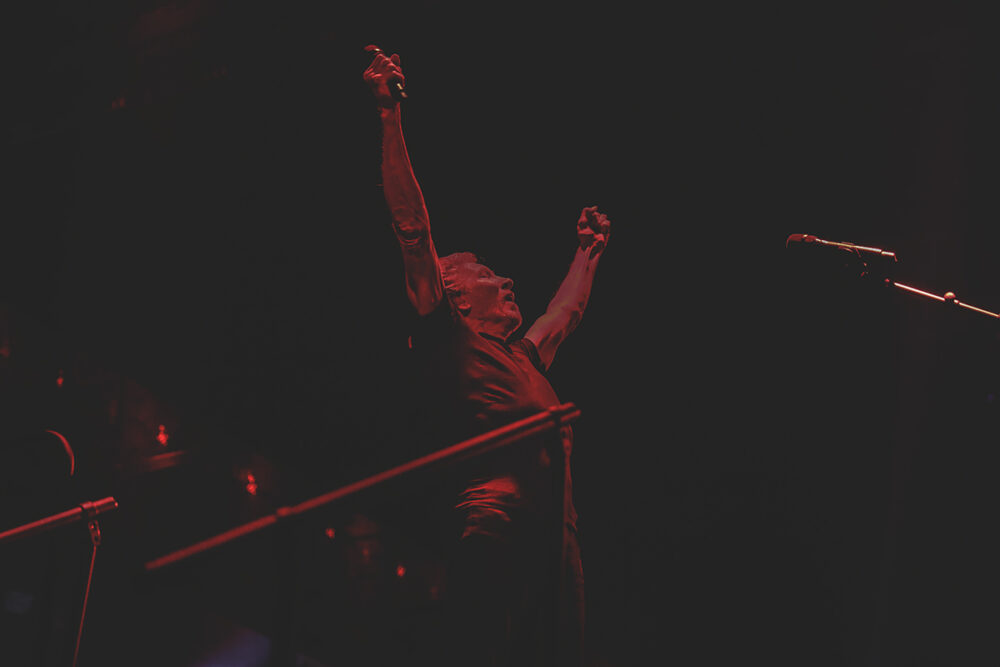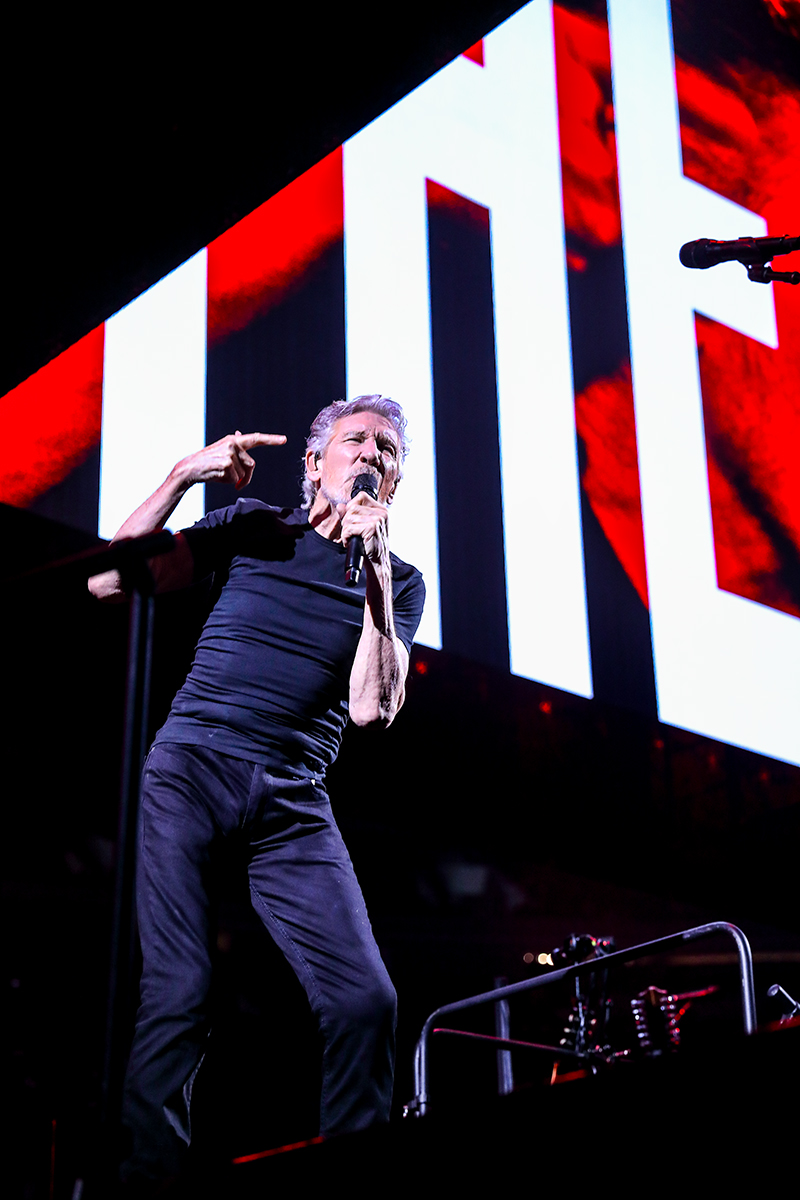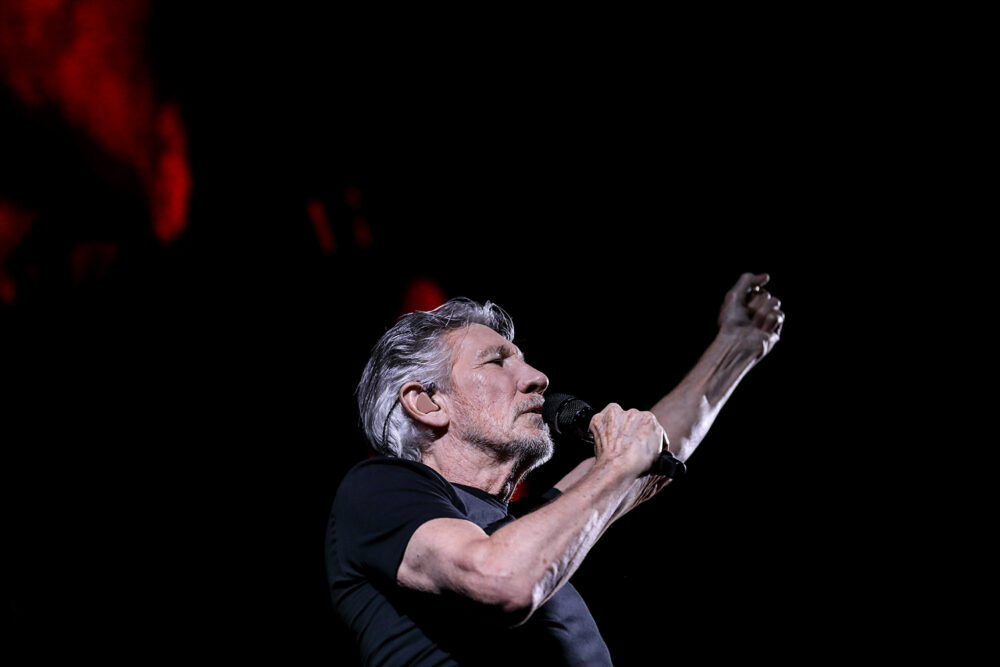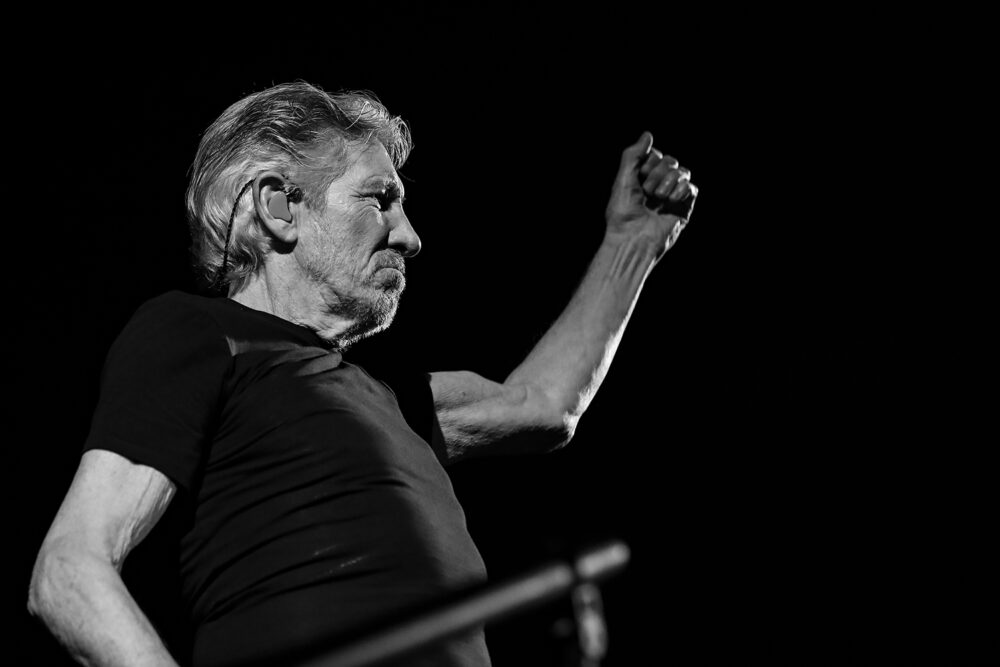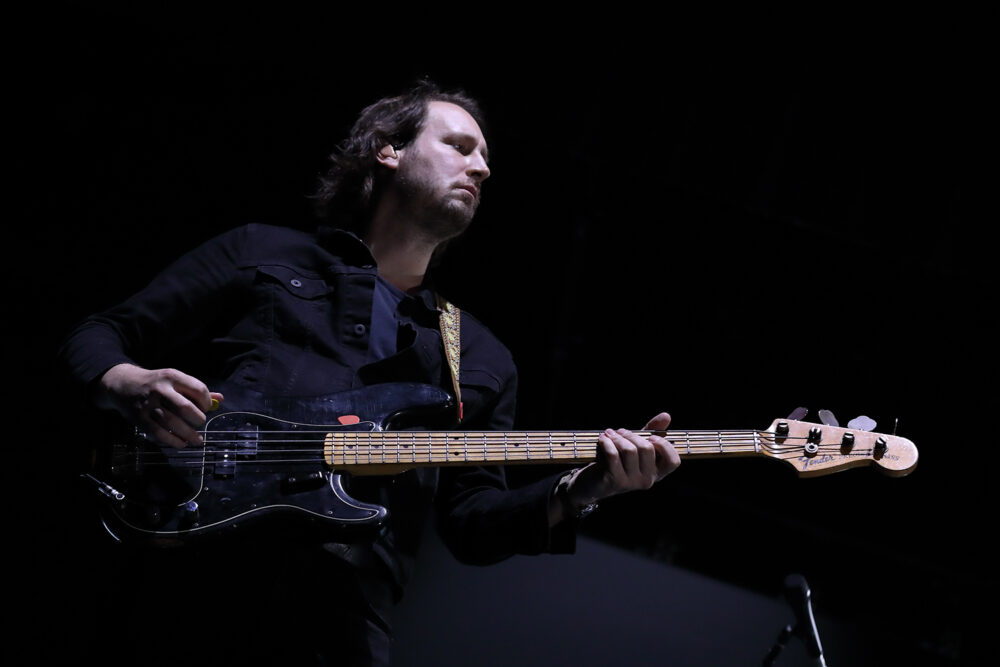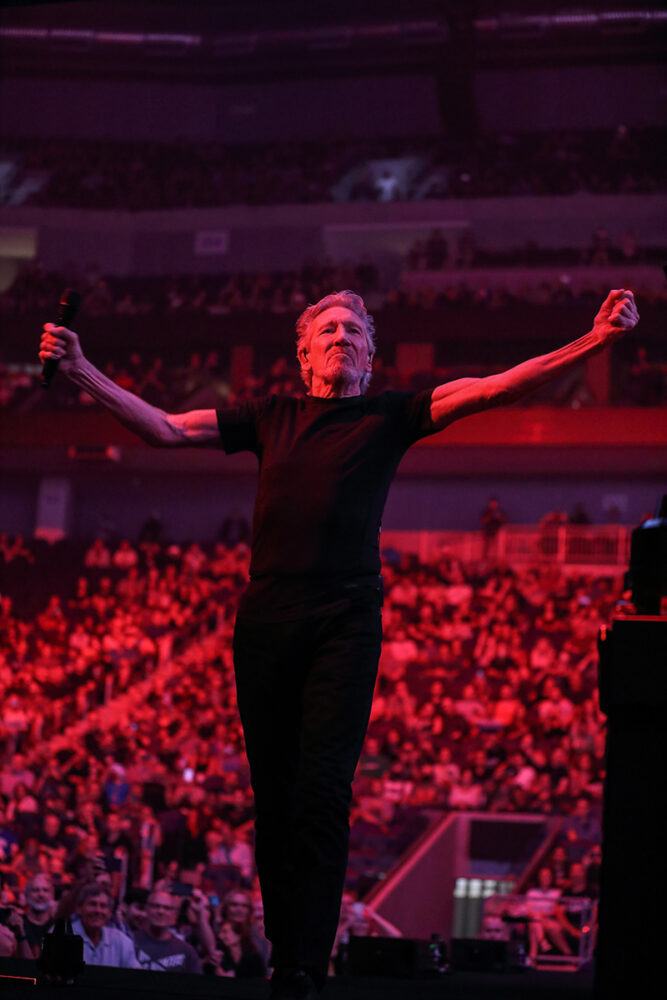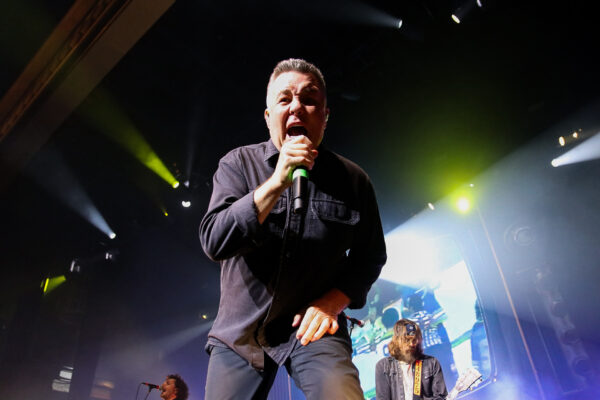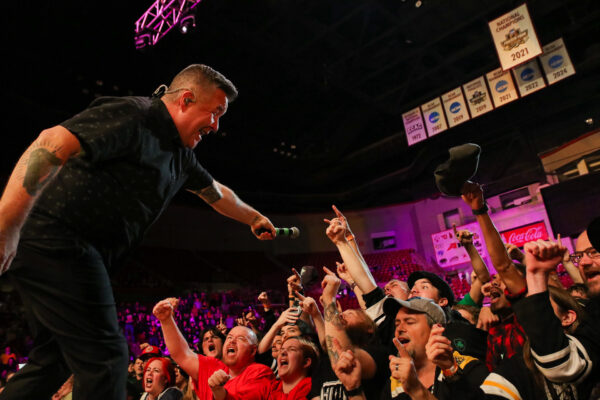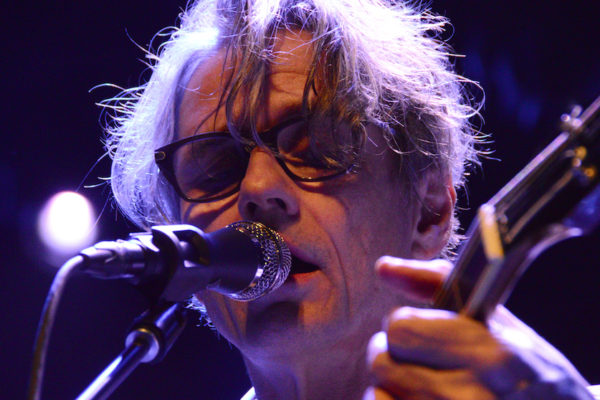There was a jury duty variety of fans outside of New York’s UBS Arena for Roger Waters. While laundry-battered Pink Floyd shirts amalgamated the group, things were otherwise oddly tense. The risk of a rock trivia fight or a political spat breaking out felt ever present, and boozy tailgaters in Uncle Sam hats heightened the likelihood of the latter. Mixed in with the screen-printed pigs and prisms were some Rage Against the Machine tees too, as Roger’s Saturday show was an on-topic choice for an off day of RATM’s five-night Garden run. Waters will soon take his turn at Madison Square Garden on the 30th and 31st; check for tickets here & here right away so you don’t miss out. You can anticipate an experience quite like this coverage (spoilers ahead) given the consistency of his setlists and the complexity of the accompanying visuals. If the crowd is similarly stuffy, you can also expect some glares if you try to stand up and dance to “Have a Cigar” (though you definitely should). Showing how well he knows his amusingly disparate fan base, the evening began with fifteen, ten, and five-minute warnings, discouragement of phone usage, and his droll disclaimer, “If you’re one of those ‘I love Pink Floyd, but I can’t stand Roger’s politics’ people, you might do well to fuck off to the bar right now.” The laughter this caused became entangled with the harrumphing of disarmed cynics, right on cue. The show’s immersive start was more unifying: a stripped-down “Comfortably Numb,” paired with a hyperrealistic animation of lonely souls wandering a post-apocalyptic urban landscape.
The Pink Floyd icon deftly traded bass for guitar for piano throughout the night, singing warmly and with strong emphasis on the peaks of the lyrics. While he certainly could have steered the whole ship, he often stepped back to let his skilled lineup shine – including Dave Kilminster (guitar, vocals), Jonathan Wilson (guitar, vocals), Robert Walter (keyboards), Jon Carin (keyboards, guitar, vocals), Gus Seyffert (bass, vocals), Amanda Belair (vocals), Shanay Johnson (vocals), Joey Waronker (drums), and Seamus Blake (saxophone, clarinet). They combined forces in a wave of sonic bliss, delivering chilling runs of “The Happiest Days of Our Lives,” “Another Brick in the Wall, Part 2” (minus the second verse) and “Another Brick in the Wall, Part 3,” each peppered with cheers. This sequence foreshadowed a night of coolly-ordered classics, intensified with video clips of shootings, bombings, police and military violence, and other ever-present forms of global injustice. Waters shrewdly pulled past lyrics into the present by injecting modern news items and digital-era symbolism into every facet of the concert. And as rebellious and creative as he is, it’s nice how he doesn’t ever stray far from what his fans seem most pleased to see: him having fun crushing Pink Floyd hits. His impressive 24-song performance was comprised of two Floyd-laden sets and a three-song encore, and it really felt like each track was carefully chosen for its prescient subject matter. It’s crazy that Waters is about to turn seventy-nine when you see him in such a fit and powerful state, effortlessly owning the four sections of his cross-shaped stage. The matching crucifix layout of the boxy screen overhead was conducive to various eye-catching tricks. At times, it looked freakishly like a real suspended skyscraper. Digital yellow banners rolled out of its windows and identical physical ones dropped from the rafters until Pink Floyd’s familiar marching hammers were everywhere.
After the incisive “The Powers That Be,” antiwar song “The Bravery of Being Out of Range” came with an unmerciful onscreen analysis of both Republicans and Democrats. With this evenly-critical view, Waters paved the way for his bigger statement about nonviolence. Obama (“normalized use of drone strikes”), Trump (“even more drone strikes than Obama”), Biden (“just getting started”), and each predecessor back to Reagan all shared the “war criminal” label in Roger’s show. Up next, “The Bar,” a unifying new solo track just debuted on this tour, depicted a metaphorical place where everyone in the world could gather in harmony. Feeding off that collective vibe, the packed arena sang along loudly to a glitzy “Have a Cigar,” a spine-tingling “Wish You Were Here,” and “Shine On You Crazy Diamond (Parts VI-IX).” Set one closed out with “Sheep” and a grand inflatable one entered the arena, eerily hovering over excited phone-wielding fans. Waters once again ensured everyone was focused by subsequently providing a seventeen-minute intermission. Many folks shuffled off to procure more drinks and boisterously discuss all the sensory thrills. To yank them back into their seats, this was a fine time to release a giant inflatable swine. The big flying pig’s body demanded attention after the break, decorated with social media iconography, weaponry, and a disturbing trend: “Steal from the poor. Give to the rich.”
After “In the Flesh” jumpstarted the second set, Waters’ mic cut out while he was announcing “Run Like Hell,” causing him to yell. This fearsome pulse-accelerator concluded with real footage of a deadly airstrike in a residential area. Captions explained that we’d just watched the U.S. military kill journalists Namir Noor-Eldeen and Saeed Chmagh, as well as eight other civilians, in Iraq in 2007 – video evidence that was “courageously leaked” by Chelsea Manning to WikiLeaks’ “equally courageous” Julian Assange. The call to “Free Julian Assange” and “Lock up the killers” had been prevalent throughout the arena upon entry, distributed not only via signage, but free veteran-run DIY newspapers to which Waters had contributed some editorial writing. The ensuing “Déjà Vu” came with “Déjà Vu (Reprise),” leading into solo track “Is This the Life We Really Want?” A protest sign with the painted words “Don’t give me zat do goody good bullshit” was hoisted behind a caped Roger for “Money.” This much-loved banger began a run of side two of The Dark Side of the Moon, preceding “Us and Them,” “Any Colour You Like,” “Brain Damage,” and “Eclipse.” The ensemble’s resonant encore sealed the deal with “Two Suns in the Sunset,” “The Bar (Reprise),” and “Outside the Wall.” Many attendees appeared disoriented when the arena lights came on, but they reluctantly drifted out like mini animal-shaped balloons.
While the rocker’s timely points had often been displayed in simple all-caps font – like “they’re killing our kids,” “fuck drones,” and “fuck the Supreme Court” – other messages were subtle and slower to unfold. Among the many examples, within a compelling sequence of historical imagery, individual protestors and everyday warriors were selected from each photo. Those faces remained where they had been cropped, gradually adding up until each person was a pixel in a rainbow pattern that filled the screen. Though Waters clearly promotes equal rights, he has been accused of bigotry by some surface-level critics and dodgy media sources. Those who take that away from this tour are perhaps misinterpreting the theatrical effect of his enemy portrayals. When he dons a totalitarian costume (black leather trench coat, sunglasses, and a marching hammer armband) or fires a prop gun into the crowd, it’s way more menacing because it’s coming from the good guy. He’s the name on the ticket you came to see, and suddenly, he’s directing mock violence your way. This subversion of expectations is not a celebration of oppression, but a winking reminder to question authority and those whom we elevate as our heroes – ceaselessly badass hall-of-famers included.
Article: Olivia Isenhart
Photos: Shayne Hanley
